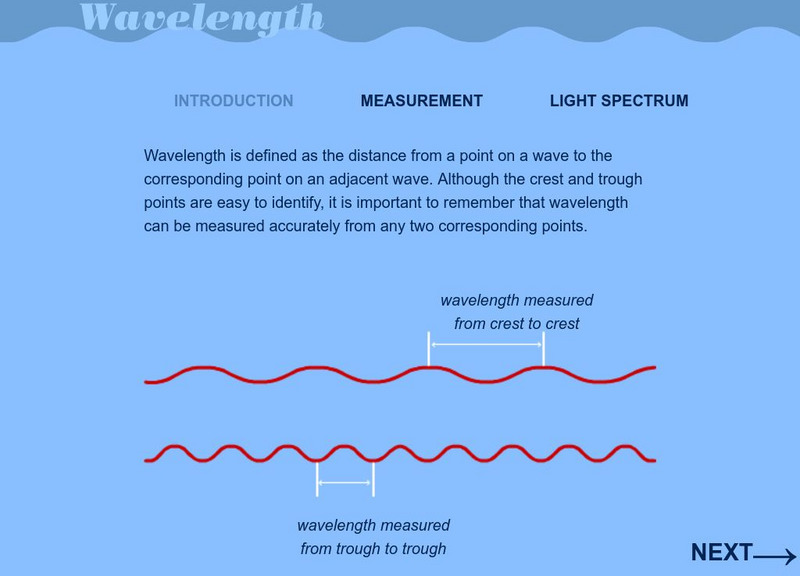PBS
Pbs Learning Media: The Presidents Biography: 6. John Quincy Adams
A brief biography featuring the professional life of President John Quincy Adams. Find details of the era, domestic policy, foreign affairs, and his presidential politics.
PBS
Pbs Learning Media: The Presidents Biography: 7. Andrew Jackson
A brief biography featuring the professional life of President Andrew Jackson. Get details on his domestic policies, foreign affairs, presidential politics as well as what was happening during his administration.
PBS
Pbs Learning Media: The Presidents Biography: 8. Martin Van Buren
A biography of President Martin Van Buren featuring his professional life. Find details of the era and his domestic policy, foreign affairs, and presidential politics.
PBS
Pbs Learning Media: The Presidents Biography: 9. William Henry Harrison
A concise biography featuring the professional life of President William Henry Harrison. Find details of the era of his administration, his domestic policy, foreign affairs, and presidential politics.
PBS
Pbs Learning Media: The Presidents Biography: 10. John Tyler
A brief biography featuring the professional life of President John Tyler. Find details of the eraduring his administration, his domestic policy, foreign affairs, and presidential politics.
PBS
Pbs Learning Media: The Presidents Biography: 11. James Knox Polk
A biography highlighting the professional life of President James Knox Polk. Discover details on his domestic policy, foreign affairs, presidential politics as well as identifying what was going on during his term.
PBS
Pbs Learning Media: The Presidents Biography: 12. Zachary Taylor
A concise biography highlighting the professional life of President Zachary Taylor. Discover details about his domestic policy, foreign affairs, and presidential politics as well as what was going on during his term.
PBS
Pbs Learning Media: The Presidents Biography: 13. Millard Fillmore
A brief biography featuring the professional life of President Millard Fillmore. Discover the details of his domestic policy, foreign affairs, presidential politics, and understand the era during his administration.
PBS
Pbs Learning Media: The Presidents Biography: 15. James Buchanan
A brief biography of President James Buchanan highlighting his professional life. Find details on his domestic policy, foreign affairs, and presidential politics as well as events going on during his administration.
PBS
Pbs Learning Media: The Presidents Biography: 17. Andrew Johnson
The professional life of President Andrew Johnson is featured in this brief biography. Identify details of the era during his term, his domestic policy, foreign affairs, and his presidential politics.
PBS
Pbs Learning Media: The Presidents Biography: 18. Ulysses S. Grant
A concise biography featuring the professional life of President Ulysses S. Grant. Identify details of his domestic policy, foreign affairs, and presidential politics as well as events during the era of Grant's administration.
PBS
Pbs Learning Media: The Presidents Biography: 19. Rutherford Birchard Hayes
A concise biography of Rutherford B. Hayes highlighting his professional life. Discover particulars about his domestic policy, foreign affairs, presidential politics as well as identify what events were taking place during his term.
PBS
Pbs Learning Media: The Presidents Biography: 21. Chester Alan Arthur
A concise biography featuring the professional life of President Chester Alan Arthur. Identify the events during his administration, his domestic policy, foreign affairs, and presidential politics.
PBS
Pbs Learning Media: The Presidents Biography: 22/24. Grover Cleveland
A professional profile of President Grover Cleveland. Note Cleveland's domestic policy, foreign affairs, presidential politics, and what was going on in the nation during his administrations.
PBS
Pbs Learning Media: The Presidents Biography: 23. Benjamin Harrison
A professional profile of President Benjamin Harrison. Harrison's domestic policy, foreign affairs, presidential politics and a list of events occurring during his administration are featured.
PBS
Pbs Learning Media: Wavelength
Understand the method used to measure wavelength and how light waves are associated with colors based on wavelength.
PBS
Pbs Learning Media: Super Why! Reading Power Bingo!
This interactive Super Why! game features a BINGO game. Students listen to Super Why! read aloud a word. Then students must click on "the opposite" of the word read aloud. Students continue clicking on the opposite of each word read...
PBS
Pbs Learning Media: Immune Cells in Action
In this video segment from The Secret of Life, watch as a virus attacks a cell, and learn how the immune system reacts to this onslaught. Includes background reading material and discussion questions. [1:40]
PBS
Pbs Learning Media: Between the Lions Early Reading: Look It Up
In this video segment from Between the Lions, the song "Look It Up" illustrates how words and images can provide important information. It combines an upbeat tune with kid-friendly images to motivate children to use reference materials....
PBS
Pbs Learning Media: The Presidents Biography: 1. George Washington
Find a brief biography highlighting the professional life of George Washington. Sections feature his domestic policy, foreign affairs, the era, and his presidential politics.
PBS
Pbs Learning Media: Microscope Activity
Explore the parts of a compound microscope and view cells through this interactive lesson.
PBS
Pbs Learning Media: Literary Elements and Techniques: Figurative Language
Discover how authors use figurative language to enhance their writing and explore the differences between similes and metaphors in this animated video [3:37] from WNET. Discussion questions below help students to further apply their...
PBS
Pbs Learning Media: Literary Elements and Techniques: Tone and Mood
Explore the difference between tone and mood in this animated video [2:28] from WNET through definitions and examples from poetry and prose. Discussion questions below help students to further apply their understanding before analyzing a...
PBS
Pbs Learning Media: The Emperor's New Clothes: Text
This is adapted from Hans Christian Andersen's tale, "The Emperor's New Clothes" in text format.

